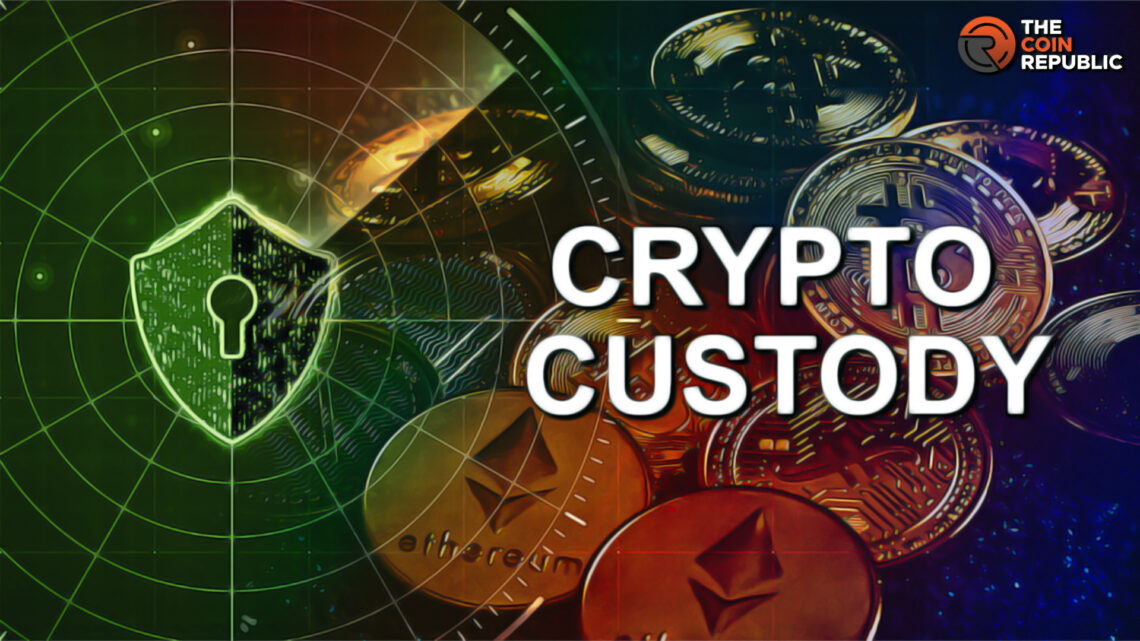- 1 Crypto custody solutions have recently become quite popular among organizations and institutional investors.
- 2 These third-party services are securing assets and making their management much better.
In the world of finance, custody refers to the safekeeping of money and other assets. Since the start of the modern economy, banks have been providing this service to their customers. In fact, they have been quite instrumental in making traditional finance solutions reliable. However, the times are changing and new financial solutions are making their way into markets now.
With the dawn of blockchain, crypto custody has emerged as one of the most notable services. In simple words, it safeguards digital assets from theft and any sort of unauthorized access. Custodians are the third-party keepers of cryptos. In traditional finance, these entities secure real-life assets like cash, securities, papers, precious metals, etc.
However, things change entirely in the decentralized domain. The blockchain-based assets exist in the virtual realm with smart contracts. To access them, users require a private key, and that’s exactly what the custodians secure. The sphere of crypto custody is wide enough to explore, so let’s get into it.
Exploring Crypto Custody
Before understanding the technicalities, it’s important to know the part they play. Because of crypto custodians, digital assets become more adaptable. Notably, cryptocurrencies still lack mainstream exposure. It hasn’t become a widely-used means of exchange or even investment.
That’s largely because institutional investors have concerns about its security. Every year, cyber miscreants hack blockchains and steal assets worth millions. So the major finance players need a robust structure that could secure their clients’ assets. That’s where crypto custody comes into the picture.
These reliable solutions make the security aspects of blockchain uncompromising. Essentially, they are third-party service providers who deploy cutting-edge measures for securing private keys. It seems that their impact is quite noticeable already. A recent report revealed that the adoption of digital assets under custody grew exponentially.
From $32 billion in 2019, they have risen to $223 billion in 2022. Thus, one can say that these solutions are making digital assets more viable for businesses globally.
Sneak-Peek into Crypto Custody Mechanism
As stated above, crypto custodians safeguard the private keys instead of the assets. In traditional finance, custodians like banks are regulated by the government. The crypto domain hasn’t come to that point yet. Maybe in the next couple of years, with the implementation of crypto regulations, the world can expect to see this.
As of now, crypto custodians are autonomous bodies. They work for their clients and charge them a decent price for this service. The technology enables them to add multiple layers of security. These service providers also provide backup facilities in case the private key is compromised.
At this point, it is important to understand the types of crypto custody too.
Self-Custody
As the name suggests, self-custody is when the crypto users secure their private keys themselves. It means that they are solely responsible for the safekeeping of their assets regardless of the amount. For users who want total control of their assets, it’s an ideal option.
Nevertheless, it also means that the users bear all the risks. In case they lose the private key or the seed phrase, they permanently lose the assets. Hence, they have to be extra careful in the safekeeping of their credentials.
Third-Party Custody
When one talks about crypto custody, they’re essentially talking about this custody solution. As discussed above, a third party takes care of the private key. Not only do they ensure security, but they also deliver easy access to the assets. Also, users should know that they obtain a license to act as custodians before offering this service.
Usually, they deploy high-end technological solutions to do that. Users can equate this situation with having an account with a bank. They should know that crypto custody solutions providers follow procedures like KYC and AML verifications. Since their customers seek third-party protection, this never becomes a big problem.
There are three types of third-party crypto custody solutions users should know about.
Exchanges
Almost every centralized exchange provides the service of crypto custody. Some even outsource this service to others but ensure the security of their customers’ assets.
Digital Asset Managers
These entities function like traditional finance solutions providers. Apart from managing assets, they may provide some other services too. Some leading names in the DeFi space are Paxos, NYDIG, and Anchorage.
Custodial Banks
Custodial banks started in 2020 with the approval of the Office of the Comptroller of the Currency (OCC). It enabled chartered banks like Citibank, BNY Mellon, and Fidelity to join the crypto domain.
Final Thoughts
Recently, crypto custody solutions have become quite popular among analysts and investors. Also, these experts have been quite vocal about the benefits they’re getting.
The companies are also favoring their usage as they’re able to better secure their clients’ assets. However, true fans of DeFi may always prefer self-custody.
The crypto community hopes that the storage and management of assets become safer, regardless of the method.
Steve Anderson is an Australian crypto enthusiast. He is a specialist in management and trading for over 5 years. Steve has worked as a crypto trader, he loves learning about decentralisation, understanding the true potential of the blockchain.


 Home
Home News
News








